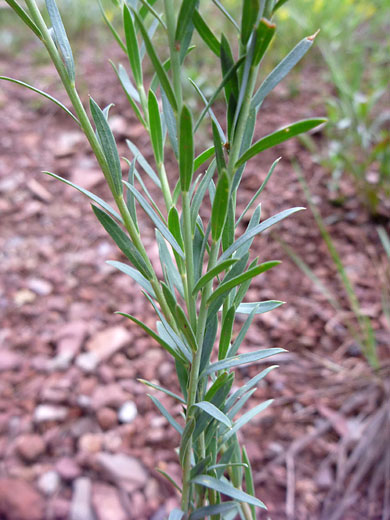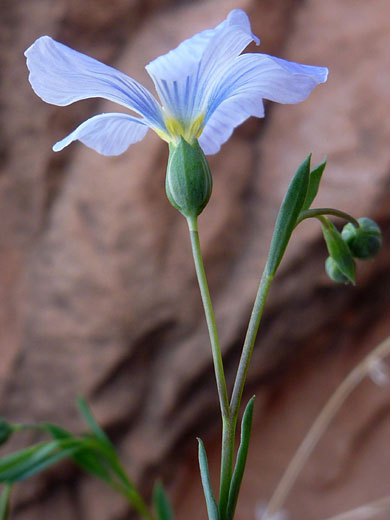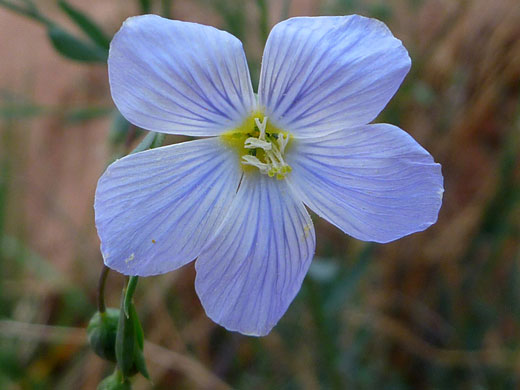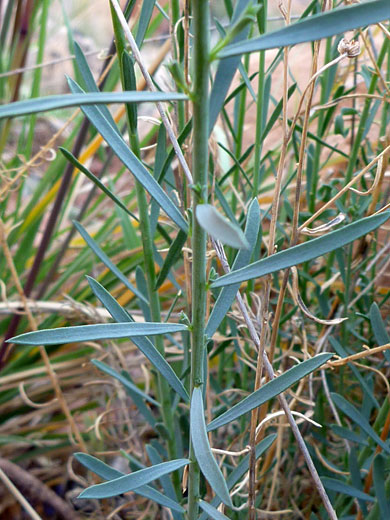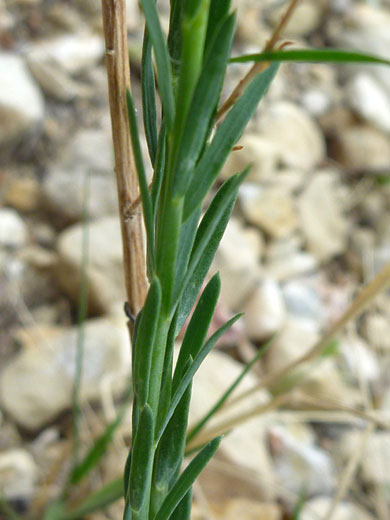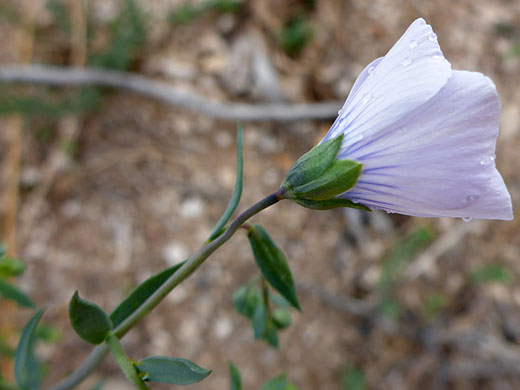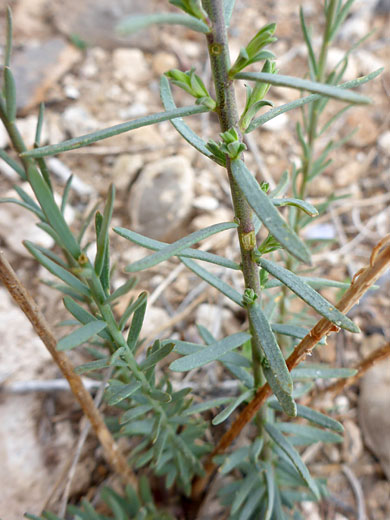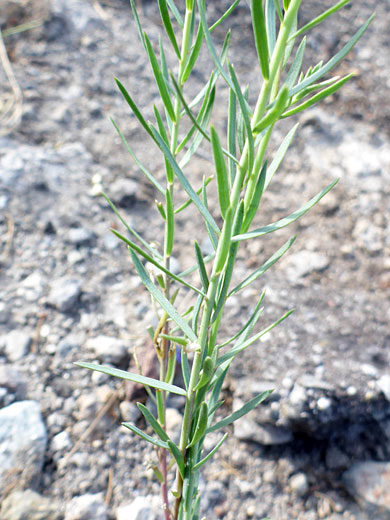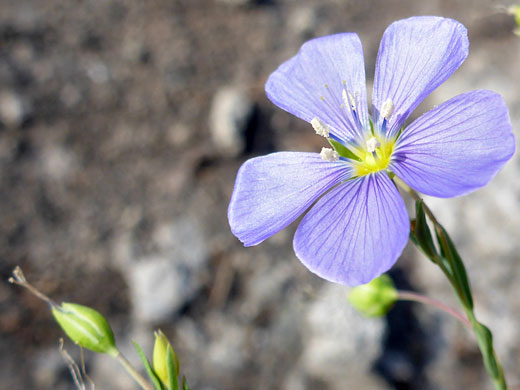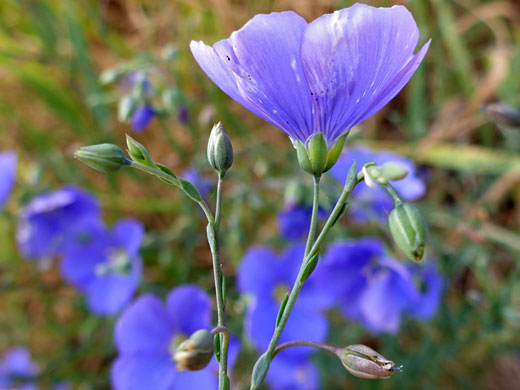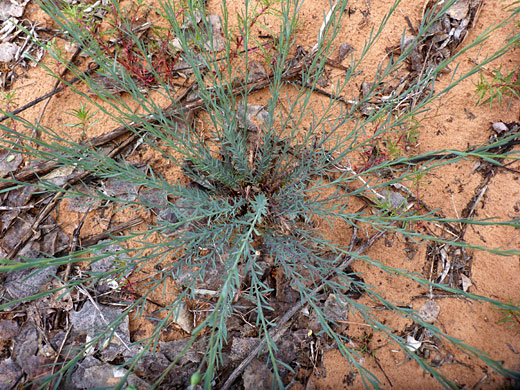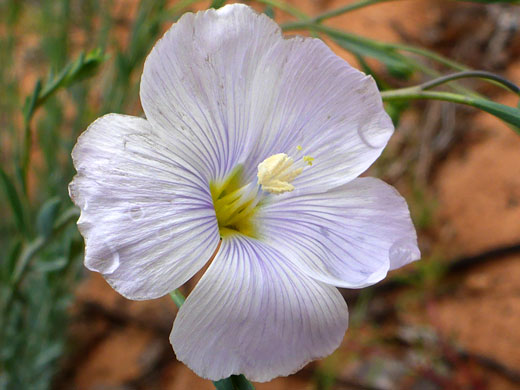Common names:
Blue flax, prairie flax, Lewis flax
Family:
Scientific name:
Linum lewisii
Synonym:
Linum perenne
Main flower color:
Range:
All the western and Great Plains states
Height:
Between 4 and 30 inches
Habitat:
Dry hillsides, grassland, semi-deserts; open or partially shaded locations, up to 12,000 feet
Leaves:
Narrowly lanceolate, alternate, up to one inch long. Hairless
Season:
May to August
Flowerheads of linum lewisii have five overlapping blue, pale purple or whitish petals, and measure 1.25 inches in diameter. The short, narrow, grey-green leaves grow at closely spaced intervals along the stem, in an alternate, spiral arrangement, and mostly point upwards, becoming gradually smaller higher up.
Flowers form open clusters, typically with 4 to 6 heads, though sometimes many more; the number is dependant on the amount of sunshine. Underneath the petals are five green sepals, while at the center are a group of stamens and styles. Stems are tall (up to 3 feet), but weak, often bending under the weight of the relatively large flowers. Flowers tend to remain open just during the morning. Fruits are egg-shaped, banded light green to almost white, and have one or more brown filaments at the tip - the remains of the stigmas.
Flowers form open clusters, typically with 4 to 6 heads, though sometimes many more; the number is dependant on the amount of sunshine. Underneath the petals are five green sepals, while at the center are a group of stamens and styles. Stems are tall (up to 3 feet), but weak, often bending under the weight of the relatively large flowers. Flowers tend to remain open just during the morning. Fruits are egg-shaped, banded light green to almost white, and have one or more brown filaments at the tip - the remains of the stigmas.
All Contents © Copyright The American Southwest | Comments and Questions | Contribute | Site Map


